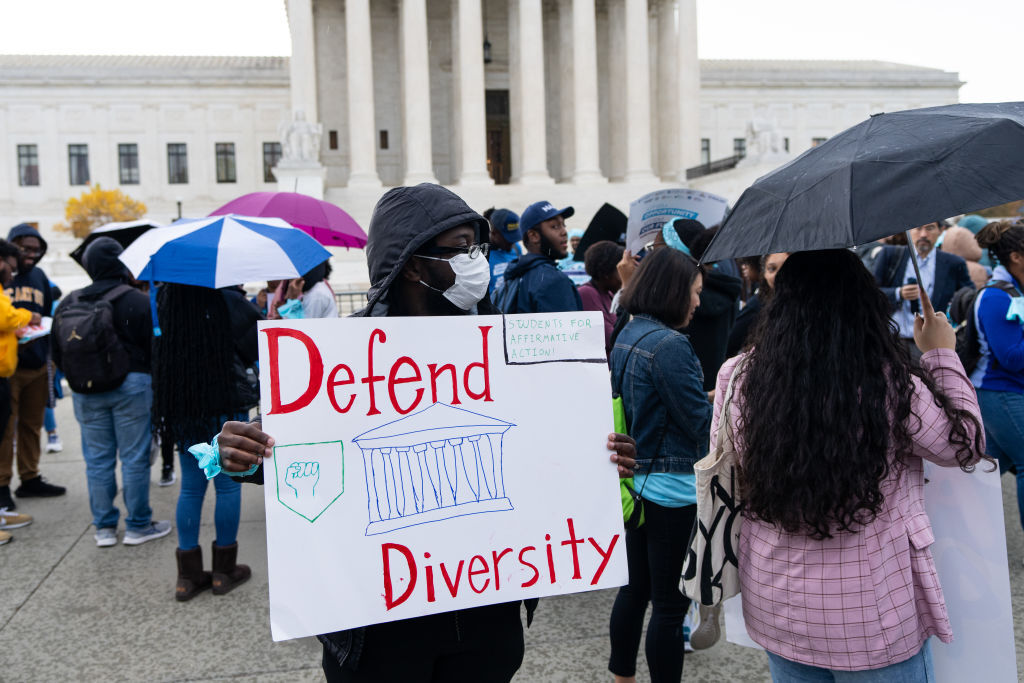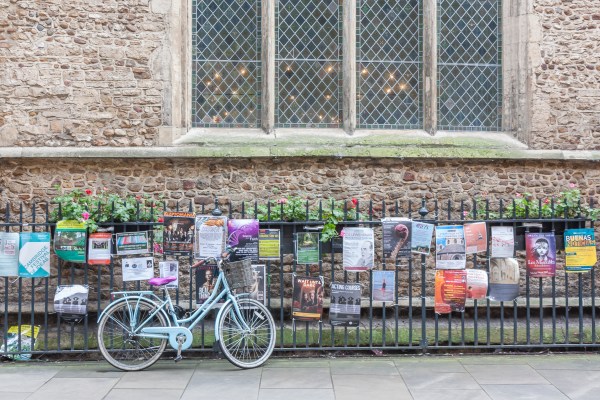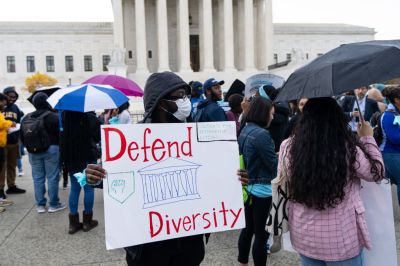The Supreme Court will decide this month a pair of cases challenging the constitutionality of race-based affirmative action policies at the University of North Carolina and Harvard University. Most legal analysts expect the court to rule against the schools, potentially ending one of the country’s most controversial policies and one of its most prolific legal sagas.
What previous Supreme Court cases have set the stage for this month’s decision?
A Rocky Start: DeFunis v. Odegaard.
The Supreme Court first ruled on affirmative action in the much anticipated DeFunis case in 1974, but it didn’t hand down the decisive result some court-watchers at the time expected. Marco DeFunis, who was white, sued the University of Washington School of Law in 1971 because he believed less-qualified minority applicants had been prioritized over him in violation of the 14th Amendment’s equal protection clause.
But in its 5-4 decision, the Supreme Court sidestepped the key legal question DeFunis raised, with a majority of the justices saying the case was moot because the University of Washington had eventually admitted Marco DeFunis. (By the time of oral arguments, DeFunis was in his final year of law school.) The court had “run away from an emotion‐laden issue,” according to a 1974 New York Times story. The ruling “clearly disserves the public interest,” Justice William J. Brennan Jr. wrote in a dissenting opinion.
Yet the case foreshadowed future legal battles. Justice William O. Douglas contended that any admissions practice not administered in a “racially neutral way” violates the Constitution’s equal protection clause, and even the majority’s opinion stated that there would be “no reason to suppose that a subsequent case attacking those procedures will not come with relative speed to this Court.”
He was right.
The End of Quotas: Regents of the University of California v. Bakke.
Four years after DeFunis, the Supreme Court decided the case of Allan P. Bakke. Bakke had been twice denied admission to the University of California, Davis School of Medicine, despite having a higher college grade-point average and test scores than all the minority students admitted in the years he applied. Bakke sued the medical school and appealed his case up to the Supreme Court, arguing the medical school’s practice of reserving 16 of the 100 spots in each year’s class for minority students was “reverse discrimination” and violated the Constitution’s equal protection principles. The court ruled in Bakke’s favor with a majority of the justices taking a stance against racial quotas and establishing the court’s long-held position against them.
Such quotas fail the important two-part test known as “strict scrutiny,” which holds that if a government or government-funded entity is going to treat people differently based on a protected class characteristic (such as race) doing so must serve a compelling government interest and be the least restrictive means of serving that interest. The court agreed that admitting a diverse student body is a compelling government interest, but ruled individualized reviews that consider race as one factor among many (what universities now call “holistic admissions”) is a less restrictive means of achieving that end than quotas.
The Modern Precedent: Gratz v. Bollinger and Grutter v. Bollinger.
In 2003, the Supreme Court decided two key cases on the same day. Gratz and Grutter challenged the constitutionality of the University of Michigan’s undergraduate and law school admissions processes, respectively.
Michigan’s undergraduate program used a point system for admissions, with each applicant scored on a 150-point scale. The program boosted minority applicants by 20 points (a perfect SAT score was worth 12 points by comparison), so “virtually all” minority applicants were admitted, attorneys said. The Supreme Court ruled in Gratz that the practice failed to meet strict scrutiny because it was unnecessarily restrictive.
But in Grutter, the court reached the opposite conclusion. Unlike the university’s undergraduate program, its law school did not automatically give preference to minorities. Though the law school did consider race in admissions, the Supreme Court decided the program was not more restrictive than necessary. Similar programs “must remain flexible enough to ensure that each applicant is evaluated as an individual,” read the majority opinion. Further, the court ruled “obtaining the educational benefits that flow from a diverse student body” was a compelling government interest.
These cases established the modern precedent. If an affirmative action program involves race as a part of an individualized and holistic assessment of applicants, then it is typically allowed. However, if an affirmative action program involves rigid racial quotas or automatic racial boosts, then it is not.
The Present Cases: Students for Fair Admissions v. President and Fellows of Harvard College and Students for Fair Admissions v. University of North Carolina.
Last October, the Supreme Court heard arguments from Students for Fair Admissions (SFFA) that Harvard and UNC’s admission programs pass neither part of the strict scrutiny test.
First, SFFA argues having a diverse student body may not be sufficiently compelling to justify current affirmative action programs because they may discriminate against some racial groups (SFFA contends Harvard discriminates against Asian American applicants by assigning them lower “personal” ratings). Further, as established in Bakke, race-conscious admission programs are meant to be temporary measures that are to be terminated “as soon as practicable.”
Second, SFFA claims the universities’ admission programs are unnecessarily restrictive because the schools could promote diversity through race-neutral means, such as eliminating advantages for legacy admissions or accepting more socioeconomically disadvantaged students.
The universities dispute these charges. Harvard denies any undue discrimination and both Harvard and UNC insist SFFA’s race-neutral alternatives are inviable. In particular, Harvard argues eliminating advantages for legacy admissions “would not meaningfully improve diversity,” while UNC notes SFFA’s lead proposal to accept more socioeconomically disadvantaged students unrealistically assumes the university could recruit all of North Carolina’s top high school students.
The wildcard in the current cases is whether the addition of three justices appointed by former President Donald Trump will upend nearly 50 years of the preceding case law.






Please note that we at The Dispatch hold ourselves, our work, and our commenters to a higher standard than other places on the internet. We welcome comments that foster genuine debate or discussion—including comments critical of us or our work—but responses that include ad hominem attacks on fellow Dispatch members or are intended to stoke fear and anger may be moderated.
With your membership, you only have the ability to comment on The Morning Dispatch articles. Consider upgrading to join the conversation everywhere.